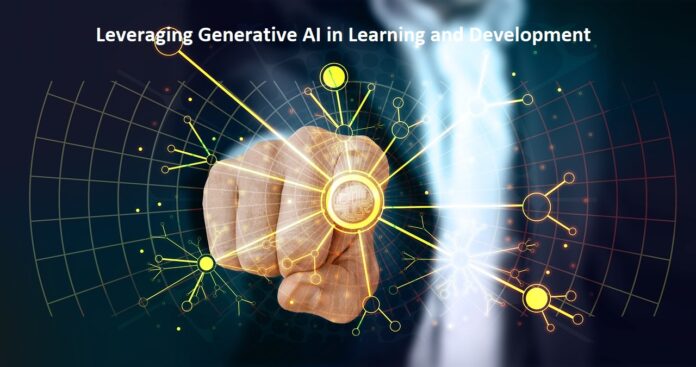Generative AI technology, a subset of Artificial Intelligence (AI), has become progressively popular in the recent past. Generative AI technology involves creating advanced systems of algorithms that create original content in the form of text, images, video, and audio from large datasets and patterns in those datasets. Some common examples of Generative AI technology include language models, image, videos and audio generated that create new content based on given various parameters.
Generative AI Rapid Development
The Generative AI movement is rapidly gaining speed with more and more companies investing in exciting and innovative applications like:
- Google – Harnessing the power of decades of Google’s research, innovation, and investment in AI, Google Cloud is bringing businesses and governments the ability to generate text, images, code, videos.
- Apple – Siri is Apple’s voice assistant that understands and generates human-like text. Apple has also developed a generative model called Turi Create, a framework for creating custom machine learning models.
- Microsoft – Microsoft has developed DeepSpeed, a framework to train large-scale generative models. Microsoft also recently announced Copilot (a set of AI features) that will be available with the Microsoft 365 suite of business software.
- OpenAI – Chat GPT has taken the world by storm. OpenAI has been developing different generative AI models like GPT-3, a language model that can generate human-like text. It has also developed DALL·E 2 that creates images from textual descriptions.
Challenges and Pitfalls in Generative AI
Generative AI is not immune to inheriting biases and issues present in the data it learns from and the conclusions it draws. Despite all advances, it has the limitations of inaccuracies, inability to cite sources, biased information and is limited to the dataset it works with. These limitations compromise the reliability and accuracy of the information generated by Generative AI.
Therefore, it is crucial to approach the information generated by Generative AI with a critical eye and supplement it with personal experience, expertise, perspective, and further research. By doing so, we can ensure that the generated content is accurate, reliable, and complete.
Generative AI in Learning and Development
Generative AI can be a valuable resource for Learning and Development (L&D) professionals, enabling them to save time, gain a deeper understanding of the subject matter, enhance their content, and avoid burnout. When used correctly, L&D professionals can leverage Generative AI to gain insights into learners’ pain points, apply appropriate methodologies and strategies to simplify learning and develop engaging and effective learning experiences for their learners.
Here are some of the ways the L&D industry is leveraging Generative AI:
Research Assistance
AI helps in exploring the subject matter more comprehensively, resulting in time savings and the discovery of previously unknown information.
Chat GPT from Open AI and Copy.ai are good examples of this. Both applications generate text based on user prompts, making it easier to research various aspects of content. For example, a user can input a topic of headline and draft content and prompt for a variety of content. Like social media posts, articles, blogs, banners or posters.
Prime the Content to Save Time
Generative AI aides the creation of preliminary drafts, thereby reducing the time required for writing. This allows L&D professionals to concentrate on enriching the content with the assistance of subject matter experts and developing engaging learning strategies that facilitate knowledge retention by learners.
Copy.ai and Shortly AI are good examples Generative AI tools that allow users to input an outline. Summary of their content to create usable drafts that save users time and effort.
Make Learning More Inclusive
Generative AI can serve as a tool in online learning sessions to motivate introverted or hesitant learners to participate more actively. By using AI to engage in fun and interactive activities. Students can find answers to their questions and boost their confidence in the learning process.
A great example of making learning more inclusive is Kahoot!, a Generative AI and gamification tool that makes learning engaging and fun. Using Kahoot!, teachers and trainers can create different types of quizzes. Interactions that even introverted or hesitant learners can actively participate in.
Personalized Learning
Writers can use AI to personalize teaching methods according to each student’s performance and provide feedback on their strengths and weaknesses. Some examples include:
- Duolingo – Learning or edtech platforms like Duolingo use AI to create customised learning experiences for each student. Based on the student’s learning history and skill level, analyse a student’s learning history, and evaluate their strength and weaknesses.
- eWandzDigital – L&D companies like eWandzDigital are merging innovations in AI with human expertise. To meet the learning and training needs of organizations. For example, they use human expertise to understand learner needs, identify skill gaps and design effective strategies while leveraging technology. While leveraging AI to create effective, engaging, and continuous learning experiences.
- Udacity – Other specialised learning platforms like Udacity use AI to provide learners. With an interactive simulation (that allows learners to practice skills) of a hospital environment in its “AI for Healthcare” program.
- edX – Other online learning platforms like edX use AI to provide personalized content and recommendations for additional study. And evaluate a student’s performance on quizzes and practice tests, providing them with personalized feedback.


